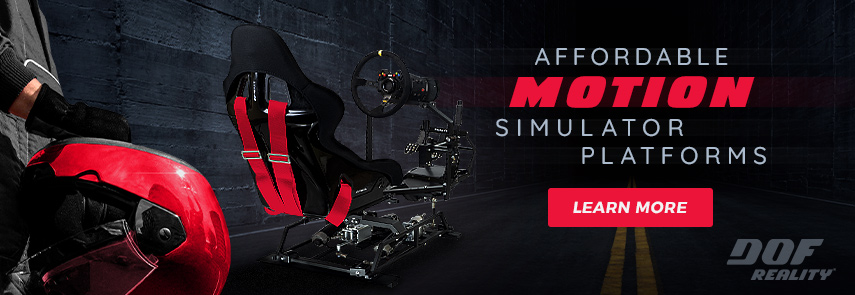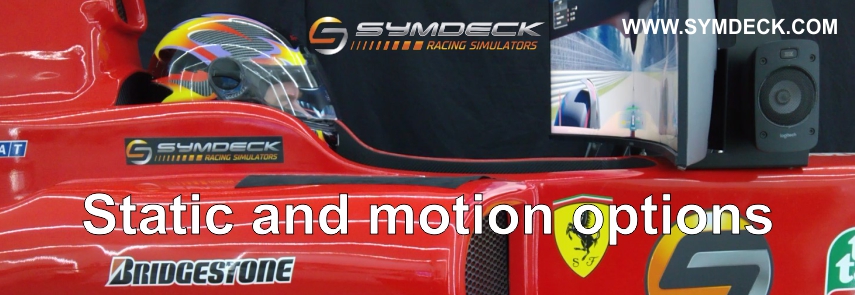[AFG_gallery id=’188′]
Toyota Hybrid tested the TMG driving simulator. |
|
TOYOTA Hybrid Racing has not been on track since the 24 Hours of Le Mans. Despite this, the team is actively preparing for the next race, the 6 Hours of Silverstone, in a virtual world. Before the next testing session, Alex and Nicolas have been using the driving simulator at TOYOTA Motorsport GmbH (TMG), the team’s home base in Cologne. What’s hiding inside this important tool that has been used regularly since the Le Mans program’s launch at the end of 2011? AUGUST 3, 2012 ( Read the original Aticle @ http://www.toyotahybridracing.com/we-tested-for-you%E2%80%A6-the-tmg-driving-simulator/ Now that you know more about the TOYOTA Motorsport GmbH (TMG) driving simulator (see here), we wanted to share the experience of driving this incredible machine. Although it is usually reserved only for professional drivers or TMG clients, we tested the driving simulator under the same conditions as the TOYOTA Racing drivers. That means preparing for the 6 Hours of Silverstone; a guaranteed experience! Have you ever dreamt of driving a prototype in the Le Mans 24 Hours? The simulator, located at the heart of TMG, the team’s home base in Cologne, gives you the sensations of driving the TS030 HYBRID on track. The simulator environment mixes cinema with competition. Five projectors and a 220° wraparound screen give an impressive visual appearance while the Formula 1 chassis on six hydraulic actuators, plus the telemetry on show in the control room make it clear this is a serious motorsport tool. In this battle between cinema and competition, it’s definitely competition that wins and these first impressions will quickly be confirmed. At first, we must get acclimatised to this unique environment. In the control room, engineer Ian Hogan gives his first tips. Before putting on the driver’s shoes that you must wear even in the simulator, quick instructions on how to use the steering wheel (which is exactly like the real one used in the TS030 HYBRID). There are controls for brake balance, traction control, radio, pit speed limiter… But only one button will be truly useful this time: the reset function that will reinitiate the session after going off the track! Helpfully, there are lights that represent the engine revs to give a good visual indication for gear shifting. Next is the installation into the F1 type cockpit – a genuine chassis which was once used in real Grands Prix! The space is narrow, but in the end not so bad. In such a tight space, it’s easy to find the two pedals, and it’s also easy to find that we’ll be braking… with the left foot. The brake pedal is incredibly hard! After adding a bit of padding to avoid knocking the elbows, the gloves go on along with the radio headset that allows direct contact with the engineer. Finally, a team hat is adorned, thanks to a tip from Nicolas Lapierre, to minimise the secondary effects of the simulator’s movements. Now, everything is ready to enjoy the new Silverstone circuit! Once the engine starts up, we must learn the starting procedure. Engage first gear with the right hand paddle behind the steering wheel, slowly release the clutch paddle on the left side and accelerate softly at the same time. After one stall, the first few feet of the British track are behind us. Nicolas tested on the same platform last week, so his time will serve as a reference point. Not to beat, but to get as close as possible. The TS030 HYBRID is not difficult to come to grips with, as long as we drive moderately. Just the time to familiarise ourselves with the steering sensitivity and discover the new parts of the track thanks to information from the engineer: right full throttle, left full throttle, big braking zone… Question is: will we ever be able to follow these directions perfectly? The hardest part is probably getting used to the simulator’s movements. They are of course very realistic, but it moves around quite a bit and at times in the first few laps our vision was interrupted. It’s mostly the braking points that really shake things up. The braking is also very demanding, the left pedal being so hard that it demands a true amount of effort to press. After several installation laps to get our bearings, we move to the next level and try pushing a bit… not too much of course, to spare ourselves from ending in the kitty litter too often. The obvious advantage of the simulator is that we don’t break the car every time we have an off. That said, the feedback from the steering wheel is quite startling. It’s then time for a break to go over telemetry with the engineer. All of this data, which looks more like a heart monitor, seems very complex at first glance, but gives a good indication of where there are opportunities to gain speed. We compare the laps to Nicolas’s lap. It’s a chance to see the braking points, corner entry speed, which gear to use, and also the steering input and energy recovery…There’s still a lot to gain! It’s off for another stint, this time for seven laps. Each lap, we attack a bit more, we brake later and we search for the limit. The TS030 HYBRID becomes a bit less docile at this speed: the beast is harder to control, and it’s getting more physical as well. The times start to improve slightly, but not enough to get close to the best time (far from it). It’s a blast of course; the sensation of speed is there and we really have fun! After lunch, and a more precise study of the TOYOTA Racing drivers’ racing lines, it’s time for another go, with a 20-lap stint. This time we’re able to forget about the simulator’s motion and to fight with the car itself. The nose of the chassis, as well as the virtual cockpit surrounds and wings are all but invisible, except in tighter corners where it’s sometimes difficult to see the apex. Curiously, the TS030 HYBRID feels easier to control when we attacked more. The rear of the car follows through the corners better, and we surprise ourselves as we push the limit while attacking the ultra-quick succession of corners at Becketts. The limit is still a way off for this car, which now seems glued to the track. The physical impressions become more intense as the steering wheel is more and more difficult to turn and we can feel the car nearly at the point of stepping out at the exit of some corners. The feelings though get better and better with every lap. We begin to leave the virtual world and start believing it’s real for an instant. We started to adjust the brake balance as well as the traction control. After yet another off at Luffield, the message from the engineer is clear: another few laps to really push to improve our lap time. After the final lap, and a final attempt to go through Copse at full throttle, the session ends. All good things must come to an end. A final look at the telemetry and we begin to see why a racing driver is truly a racing driver, even if at certain points we’re able to get close. We’d love to get back in the seat to keep progressing, because that’s truly the pre-dominant sentiment: with the simulator, we can constantly learn and improve. That’s only the feeling of an amateur. We can only imagine the advantages that such a tool can bring to one of the team’s drivers, from both performance and set-up perspective… |
|
Fists TDM Article – http://www.toyotahybridracing.com/the-tmg-driving-simulator-what-is-it/?myvar=News |
|
|
 Bsimracing Sim Racing Resources and News for the racing enthousiast.
Bsimracing Sim Racing Resources and News for the racing enthousiast.






